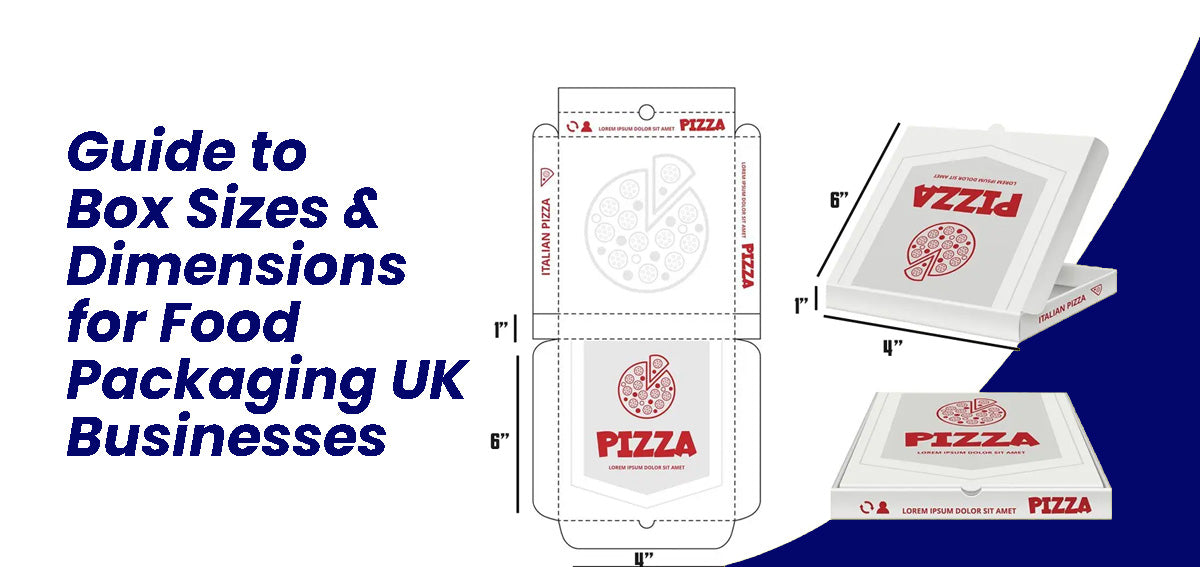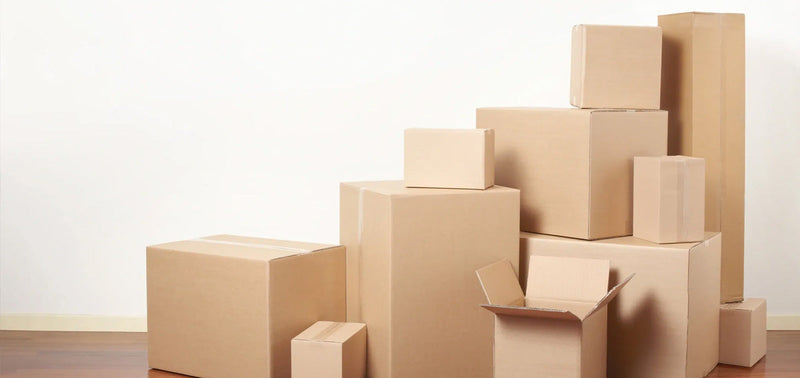Guide to Box Sizes & Dimensions for Food Packaging UK Businesses
September 20, 2025

Choosing the right size and dimensions for your packaging boxes is vital — it affects how your product arrives, the cost of shipping, storage, and ultimately your customer’s experience. At Custom Supplies UK, we help restaurants, takeaways, bakeries and cafés pick dimensions that fit perfectly, reduce waste, and present your brand in the best light.
In this guide you'll learn:
-
Why accurate box measurements matter
-
How to measure your items properly
-
How box material and design affect dimensions
-
Tips for choosing standard vs custom sizes
-
UK-relevant considerations (shipping rules, storage, etc.)
Why Accurate Box Sizes & Dimensions Matter
Getting the size right from the start helps with:
-
Food Protection and Freshness
A box that's too small squashes your product; too big lets it move, causing damage or losing heat. -
Cost Efficiency
Oversized boxes cost more: in material, shipping (larger parcels cost more), and storage. Undersized boxes may require redesigns or returns, wasting time and money. -
Better Branding & Customer Experience
A well-fitting box looks neat, shows care, and supports your brand image. Your logo, printing, and any inserts or lining will look better. -
Environmental Impact
Using boxes that are the right size reduces waste — less material used, less shipping volume, less empty space in transit.
How to Measure Boxes Correctly
To make sure your food boxes fit well, here are steps you should follow:
|
Step |
What to Do |
|
1. Measure Your Product |
Use a ruler or measuring tape to measure the product’s length (longest side), width (side next to that), and height or depth (top to bottom). |
|
2. Add Allowance |
Add space for any internal packaging (e.g. grease-proof paper, plastic liners), cushioning, or if the food has a lid or toppings. Also add thickness of the box material. This ensures nothing gets squashed. |
|
3. Calculate Volume for Reference |
Multiply length × width × height to get a rough volume. Helps compare different box sizes and estimate shipping costs. |
|
4. Consider Material Thickness |
Material (kraft board, corrugated, paperboard) adds thickness. If you forget that, the internal usable space will be less than expected. |
|
5. Test a Prototype Box |
Before placing large orders, get a sample or mock-up. Put the real item(s) in, check movement, lid fit, printing, ease of use. |
Material & Box Style Affecting Dimensions
The material and box style you use will influence what sizes are practical:
-
Corrugated Board requires more internal depth because of its fluted inner structure.
-
Paperboard / Board is thinner, so external vs internal measurements are closer.
-
Kraft or Recycled Board may be slightly more flexible or compressible.
-
Clamshells, tuck-end boxes or boxes with lids need extra height for closure.
-
Boxes with windows or inserts may lose space due to extra components.
Standard Sizes vs Custom Sizes
|
Option |
Pros |
Cons |
|
Standard Sizes |
Faster to order, usually cheaper; easy to stock; many shipping carriers use standard box sizes. |
May not be perfect fit; may waste internal space; design constraints. |
|
Custom Sizes |
Fit your food exactly; better branding & professionalism; better protection during transit; potential cost savings over time. |
Higher setup costs; longer lead times; need accurate measurements. |
UK-Specific Considerations
When selecting box sizes & dimensions in the UK, keep these in mind:
-
Parcel & Courier Size Restrictions: UK courier services often charge by volumetric weight. Oversized boxes with a lot of empty space can cause high costs.
-
Storage Space in Kitchens / Takeaways: If your kitchen or storage area is small, oversized boxes cause logistic difficulties.
-
Food Safety Regulations: Lids must fit properly; ventilation or greaseproof lining where required; avoid materials that squeeze food or affect heat retention.
-
Environmental & Legal Compliance: Packaging waste regulations, recycling guidelines etc.; smaller, recyclable boxes are encouraged.
Practical Examples
Here are a few examples for common food items:
|
Food Item |
Suggested Internal Dimensions* |
Why These Dimensions |
|
Pizza (12-inch) |
~ 12½ in × 12½ in × 1½ in |
Extra room for cheese overhang, lid clearance. |
|
Burger with toppings + side |
~ 6 in × 6 in × 2½ in |
Enough depth for toppings; avoids flattening. |
|
Salads / Bowls with lid |
~ 8 in diameter × 3 in depth |
Lid fits; dressing doesn’t leak over edges. |
|
Sandwiches / Wraps |
~ 8 in × 5 in × 2 in |
Comfortable for sandwich size; space for paper wrap. |
*Measurements above are internal. Choose external dimensions accordingly based on material thickness.
Common Mistakes to Avoid
-
Ignoring thickness of material → box ends up too tight.
-
Forgetting internal packaging / inserts → product doesn’t fit properly after adding these.
-
Using very large boxes thinking “better safe than sorry” → waste and high shipping costs.
-
Over-estimating size so lid can’t close properly.
-
Not testing with real product + packaging before placing bulk order.
How Custom Supplies UK Helps You Get Sizes Right
At Custom Supplies UK, we assist with:
-
Providing templates or size calculators so you can specify length × width × height with correct allowances.
-
Offering mock-ups or sample boxes so you can test fit before full production.
-
Guiding you on what style + material best suits your product to maximise internal space and minimize cost.
-
UK delivery with dimensions suitable for courier standards to keep shipping efficient.
Final Thoughts
Your box’s size and dimensions are more than figures on a spec sheet — they’re essential in ensuring your product arrives well, looks professional, and doesn't cost extra in waste, materials or shipping.
Get it right from the start, and your packaging will work harder for your brand.
👉 Ready to order custom boxes with the perfect fit? Get in touch with Custom Supplies UK today. We’ll help you measure, choose, test, and produce packaging that’s just right.


